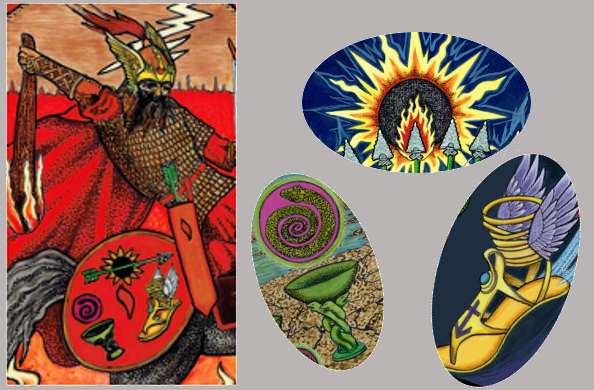
Understanding the Enduring Fascination with Tarot Cards

Title: Tarot: Unveiling the Origins and Cultural Afterlives of a Mystical Practice
From the vibrant table of a modern tarot reader to the galleries of scholarly exhibitions, tarot cards have long danced the line between mysticism and art, play and divination. A new exhibition titled Tarot – Origins & Afterlives at The Warburg Institute in London delves deep into the multifaceted legacy of tarot, tracing its artistic, historical, and cultural transformations from the 15th century to today.
Exploring the Roots: From Play to Prophecy
The humble beginnings of tarot are curiously elusive, forging a tapestry of speculative myths and fragmented historical documentation. Some claim tarot descends from Egyptian wisdom, while others pin its genesis to Renaissance Italy. Evidence showcased at the Warburg Institute, including the rare 15th-century Mantegna Tarocchi, suggests that tarot cards originally emerged as tools for entertainment—game decks used by the nobility, rather than instruments for spiritual insight.
A pivotal moment in the history of tarot came in the 18th century, when French Freemason Antoine Court de Gébelin proposed that tarot cards were not mere games, but repositories of ancient esoteric knowledge. He linked them to the mythical Book of Thoth from Ancient Egypt. This interpretation catapulted tarot into the realm of the occult, sparking a transformation that has defined much of its modern use.
The Warburg Institute and the Aby Warburg Legacy
A cornerstone of the exhibition lies in the intellectual foundation of Aby Warburg, the pioneering art historian after whom the institute is named. Warburg’s 1909 exploration into tarot’s iconography is revisited in the exhibit’s “Tarot Atlas” section, highlighting cards not only as fascinating art objects but as visual texts loaded with cultural symbolism.
Among the artifacts are striking historical decks like the Tarot of Marseille—popularized in the 19th century—and the Austin Osman Spare tarot from 1906. These relics reveal how tarot evolved aesthetically, reflecting changing cultural narratives and continuing to influence modern interpretations.
Art, Storytelling, and the Modern Tarot Renaissance
What makes tarot so enduring? According to curators Jonathan Allen and Martina Mazzotta, it is the card system’s “combinatory” nature that lends itself to endless storytelling. “Tarot is ideally suited to telling stories in many different areas and [for] different purposes,” says Allen.
The exhibition expands on this idea by treating tarot as a “story machine,” showcasing creative uses in literature and contemporary art. Notable highlights include Italo Calvino’s novel The Castle of Crossed Destinies, in which characters communicate solely via tarot cards, and Suzanne Treister’s HEXEN 2.0 and HEXEN 5.0 decks, which fuse cybernetics, psychic warfare, and alternative histories to challenge dominant ideologies.
A particularly engaging section titled “Tarotkammer” draws on the old concept of the Wunderkammer—cabinets of curiosities—to exhibit a diverse range of contemporary tarot decks by artists grappling with identity, futurism, and social justice. From the boldly reimagined Black Power Tarot to Courtney Alexander’s Dust II Onyx, which centers the Black experience, tarot becomes a critical platform for marginalized voices.
Tarot Today: Between Magic, Meaning, and Modern Games
In today’s landscape, tarot occupies a unique cultural crossroads. It is at once a set of sacred cards used in mystic rituals, a psychological tool for reflection, and an aesthetic object for spiritual and artistic exploration. Allen notes how tarot, in modern hands, feels closer to a complex and meaningful game—a paradoxical heir to both esoteric tradition and playful creativity.
This “third phase” of tarot echoes Warburg’s own notion of the “afterlives” of symbols—how old forms return in new guises to affect the cultures that inherit them. As viewers contemplate cards like “The Juggler” or “The World” from centuries-old decks, they’re also engaging with archetypes that continue to carry resonance, shaped by centuries of mythology, art, and human yearning.
A Portal to the Past and Future
Tarot – Origins & Afterlives presents more than just historical artifacts; it forges links between visual culture, philosophical inquiry, and contemporary imagination. Whether you see tarot as an esoteric path, a creative exercise, or a meditation tool, the exhibition reaffirms one unifying perspective: tarot is a bridge—between past and present, reality and interpretation, tradition and innovation.
The exhibition remains on view at The Warburg Institute in London through April 30, 2025. Accompanying events scheduled for April 24, 26, and 30 promise deeper exploration for anyone intrigued by the magic, mystery, and metamorphoses of tarot.
For more information and tickets, visit: https://warburg.sas.ac.uk/events/tarot-origins-and-afterlives-